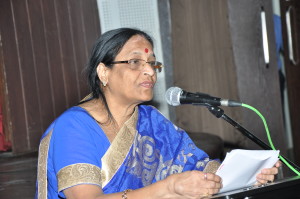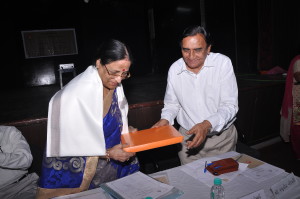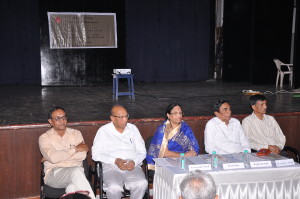The Institute of Jainology and B J Vidhyabhavan had jointly sponsored a talk on the latest research of Ashtapad Tirth by Dr Lata Bothra, an authoritative Indian scholar of Jainology, Antiquity and Archaeology on 8th March at the H K Hall, Ahmedabad.

Ashtapad Tirth is mountain on which the first Jain Tithankar, Bhagwan Rushabhdev attained nirvana and is considered to be the holiest of holy Jain shrine. Though to date no one has been able to confirm its exact location and is now considered to be a ‘lost’ Tirth. Ashtapad literally means eight steps which could be either eight giant steps to ascend the mountain or a chain of eight mountain peaks.
Earlier it was believed that it was located in the vicinity of Mount Kailash and Maansarovar. However, attempts through two exploratory expeditions and also satellite observation of all the mountain ranges in the area did not yield any authentic proof of Ashtapad’s existence there.

Recent surveys indicate that Ashtapad Mountain is located in Sichuan Province in South West China near the Tibetan border and that is filled with immense natural beauty. It is called Ashtapad perhaps because there are eight mountain peaks. There are numerous caves in this area and there is a valley named ‘Muni Valley’. There are many crystal idols that shine in the dark. Once can go to this mountain range by securing permission from the local Lamas.

Shree P S Thakker, a well-known archaeologist also expressed his views based on his own research.
Dr Kumarpal Desai who was chairing the meeting said that Ashtapad is considered to be one of the most important Tirth in Jain history and thus constant research on its location has been going on for the past 20 years. He said over twenty papers, two books and several booklets have been published on the information gathered thus far.
In 1930, an English researcher, Joseph Rock claimed to be the first person in modern times to have seen Ashtapad and in his opinion he had never seen a more beautiful place than this in the whole world. He continued ‘If there is sufficient in-depth research about Ashtapad is undertaken, then perhaps we may get to the source of human civilisation. It is possible that humans did not evolve in this area but this will definitely be a place where civilization started.
The history of the research undertaken in this area and the results obtained were shown through power point presentation.
Several dignitaries including Shree Raghuvir Choudhry, Shree Mansukhbhai Medani, Shree Ambrish Shah, Shree Subhash Bhrambhatt, Shree Narendra Bhandari, Shree Rajmal Jain, Shree R T Savalia, several researchers, historians and Jain scholars were amongst the audience.

